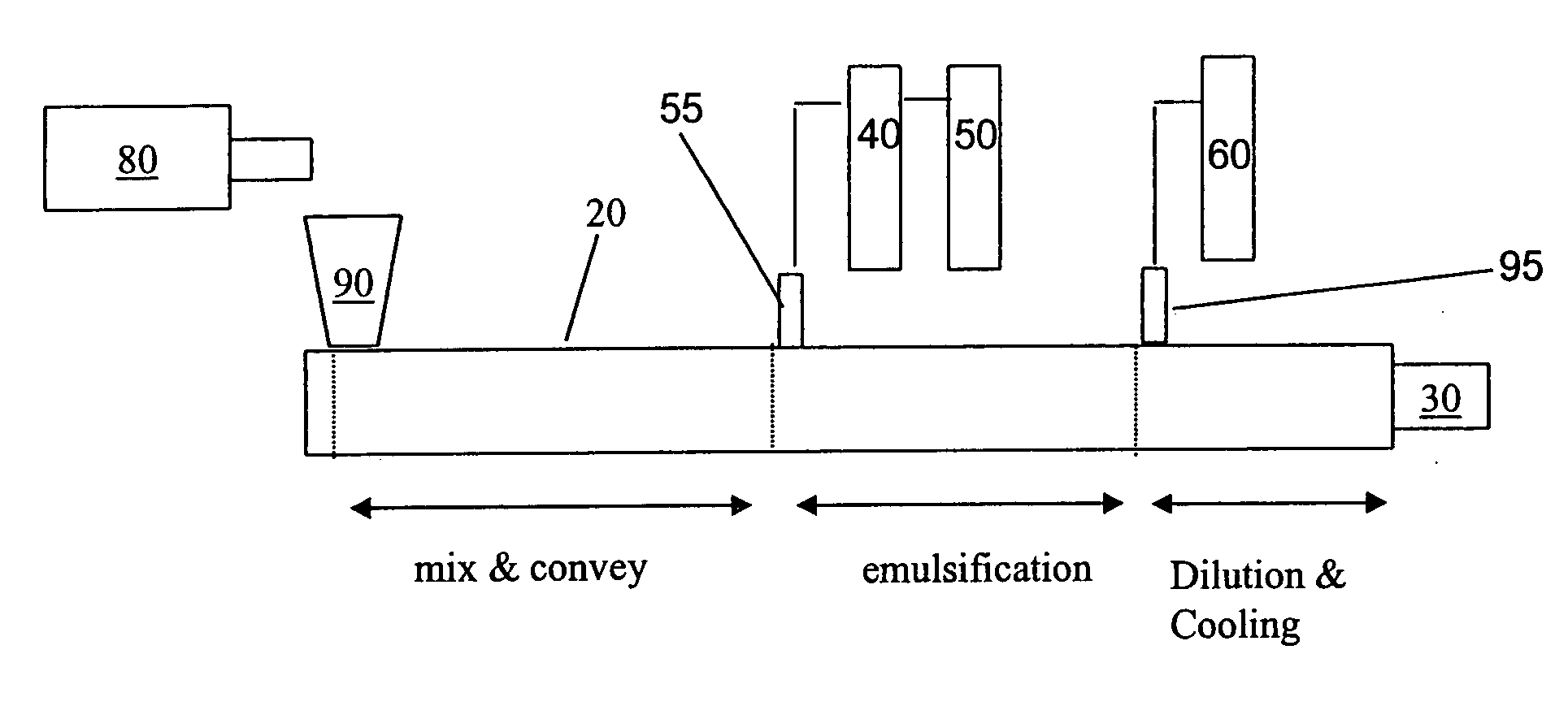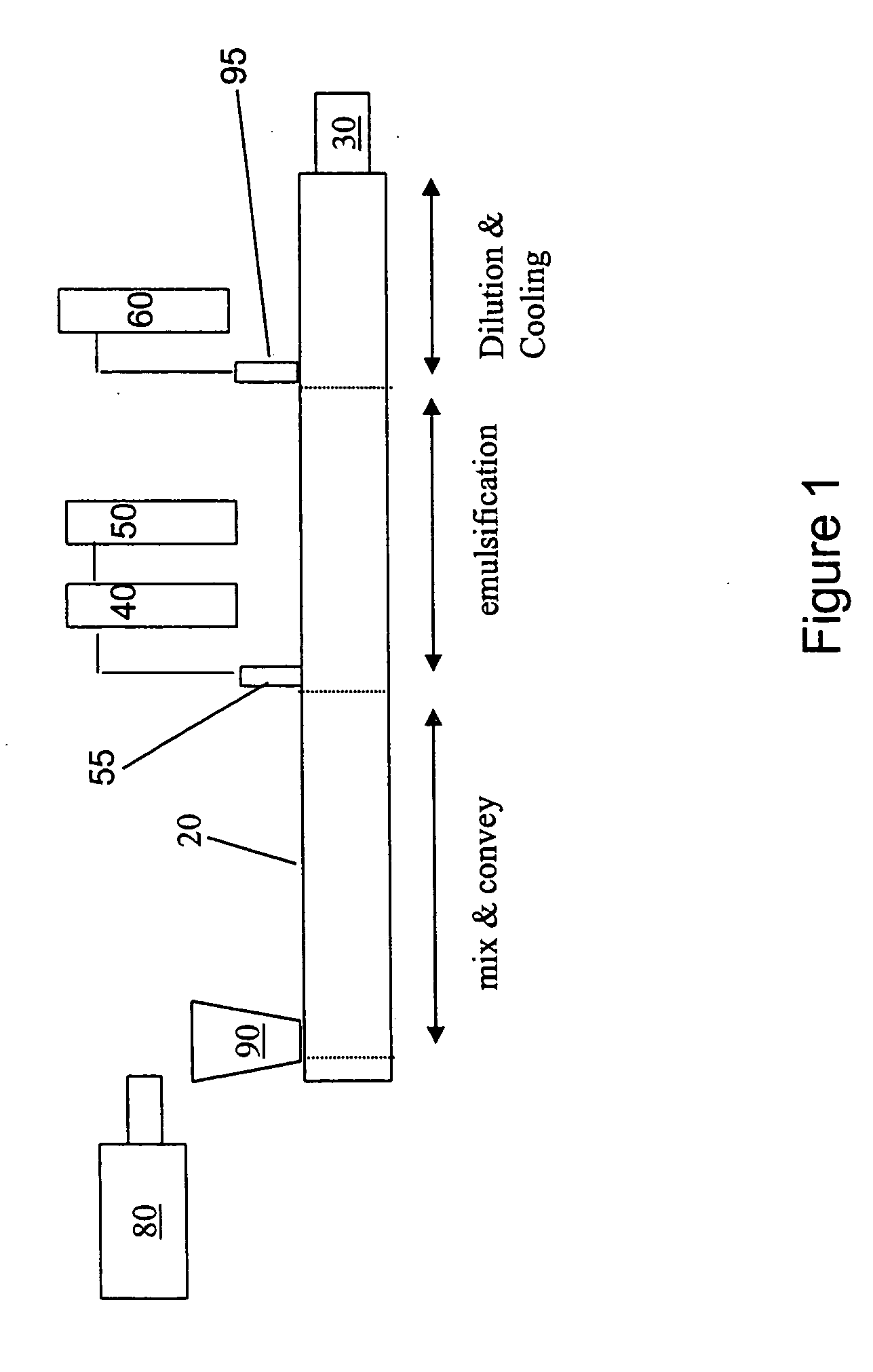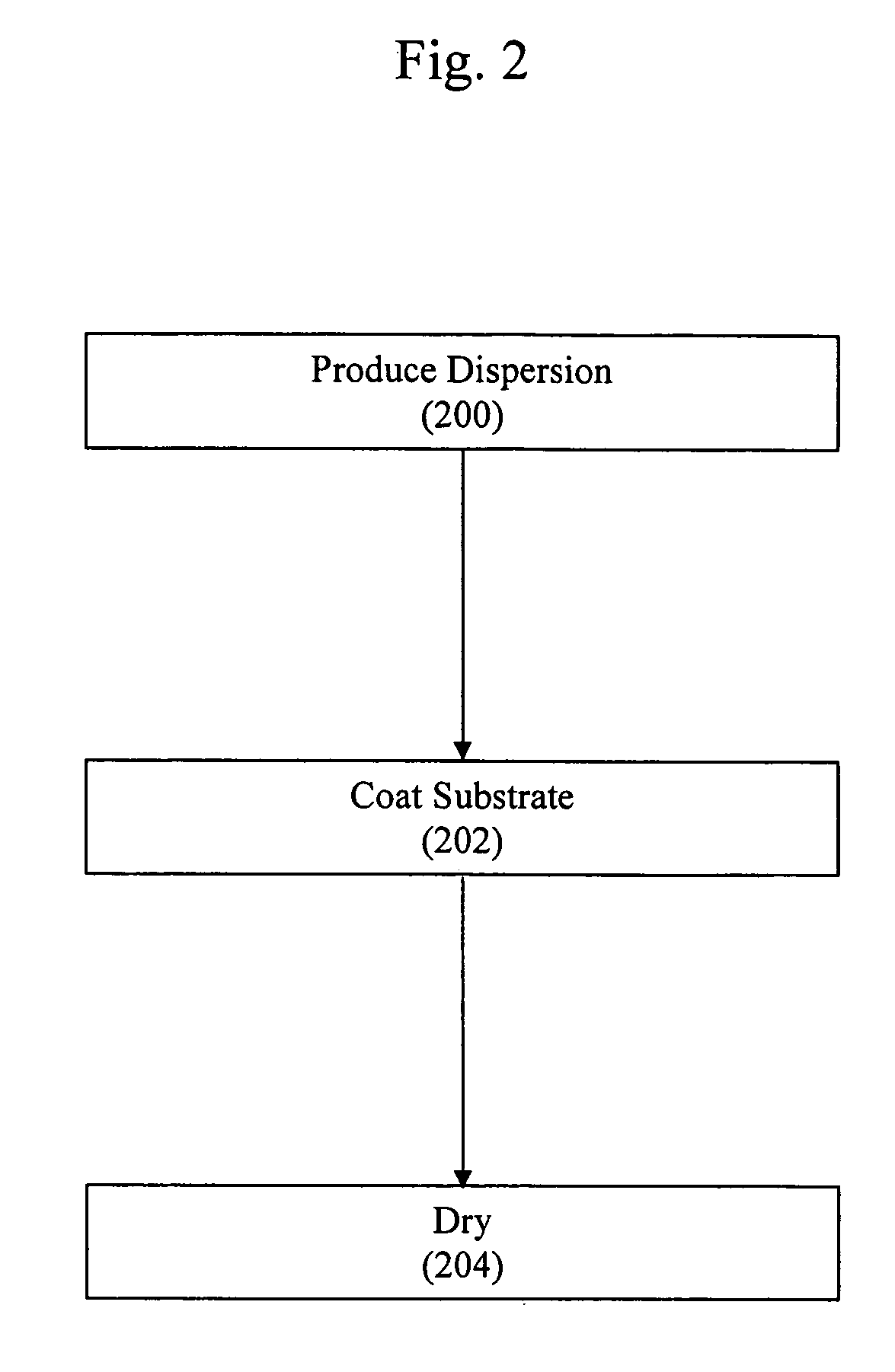Aqueous polymer dispersions and products from those dispersions
- Summary
- Abstract
- Description
- Claims
- Application Information
AI Technical Summary
Benefits of technology
Problems solved by technology
Method used
Image
Examples
preparation example 1
[0110] 100 parts by weight of a thermoplastic ethylene-vinyl acetate commercially available from DuPont having a vinyl acetate content of about 28 wt %, a density of about 0.95 g / cm3 (ASTM D-792) and a melt index of about 6 g / 10 min. (as determined according to ASTM D1238 at 190° C. and 2.16 kg), and a melting point of about 73° C. (as determined according to ASTM D3417) and 4.2 parts by weight of a C32 carboxylic acid (Unicid 425 manufactured by Baker-Petrolite, acid value 97 mg KOH / g) are melt kneaded at 180° C. in twin screw extruder at a rate of 8.3 kg / hr.
[0111] Upon the melt kneaded resin / surfactant, 4.6 wt % aqueous solution of potassium hydroxide is continuously fed into a downstream injection port at a rate 0.9 kg / hr (at a rate of 10 wt % of the total mixture). This aqueous dispersion is subsequently diluted with additional water at a rate of 5.7 kg / hr before exiting the extruder. An aqueous dispersion having a solids content of 56 wt % at pH 10.7 is obtained. The dispersed...
preparation example 2
[0112] 100 parts by weight of a thermoplastic ethylene / 1-octene copolymer with an octene content of about 38 wt %, a density of about 0.87 g / cm3 (ASTM D-792) and a melt index of about 5 g / 10 min. (as determined according to ASTM D1238 at 190° C. and 2.16 kg) a Mw / Mn of about 2.0, and a melting point of about 63° C. (as determined by DSC at a scanning rate of about 110° C. per minute), commercially available from DuPont Dow Elastomers, and 3.1 parts by weight of a C18 / C16 carboxylic acid (Industrene 106 manufactured by CK Witco, acid value 200 mg KOH / g) are melt kneaded at 125° C. in twin screw extruder at a rate of 7.9 kg / hr.
[0113] Upon the melt kneaded resin / surfactant, 23.9 wt % aqueous solution of potassium hydroxide is continuously fed into a downstream injection port at a rate 0.2 kg / hr (at a rate of 2.5 wt % of the total mixture). This aqueous dispersion is subsequently diluted with additional water at a rate of 5.4 kg / hr before exiting the extruder. To further dilute the res...
preparation example 3
[0114] 100 parts by weight of a thermoplastic ethylene / 1-octene copolymer with octene content of about 38 wt %, a density of about 0.87 g / cm3 (ASTM D-792) and a melt index of about 5 g / 10 min. (as determined according to ASTM D1238 at 190° C. and 2.16 kg) a Mw / Mn of about 2.0, and a melting point of about 63° C. (as determined by DSC at a scanning rate of about 10° C. per minute.), commercially available from DuPont Dow Elastomers, and 3.6 parts by weight of a C22 / C18 carboxylic acid (High-erucic rapeseed oil manufactured by Montana Specialty Mills, acid value 97 mg KOH / g) are melt kneaded at 150° C. in twin screw extruder at a rate of 5.0 kg / hr.
[0115] Upon the melt kneaded resin / surfactant, 16.3 wt % aqueous solution of potassium hydroxide is continuously fed into a downstream injection port at a rate 0.1 kg / hr (at a rate of 2.0 wt % of the total mixture). This aqueous dispersion is subsequently diluted with additional water at a rate of 3.2 kg / hr before exiting the extruder. To f...
PUM
| Property | Measurement | Unit |
|---|---|---|
| Temperature | aaaaa | aaaaa |
| Temperature | aaaaa | aaaaa |
| Temperature | aaaaa | aaaaa |
Abstract
Description
Claims
Application Information
 Login to View More
Login to View More - R&D
- Intellectual Property
- Life Sciences
- Materials
- Tech Scout
- Unparalleled Data Quality
- Higher Quality Content
- 60% Fewer Hallucinations
Browse by: Latest US Patents, China's latest patents, Technical Efficacy Thesaurus, Application Domain, Technology Topic, Popular Technical Reports.
© 2025 PatSnap. All rights reserved.Legal|Privacy policy|Modern Slavery Act Transparency Statement|Sitemap|About US| Contact US: help@patsnap.com



